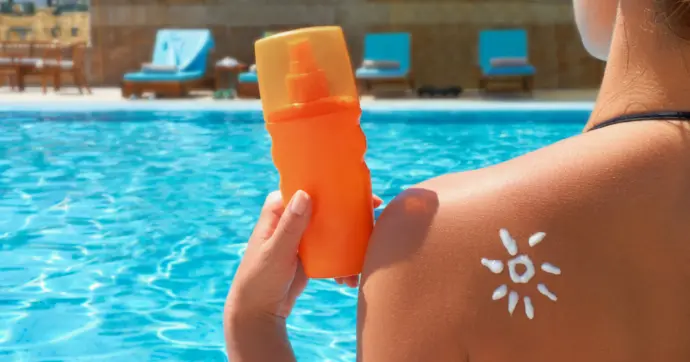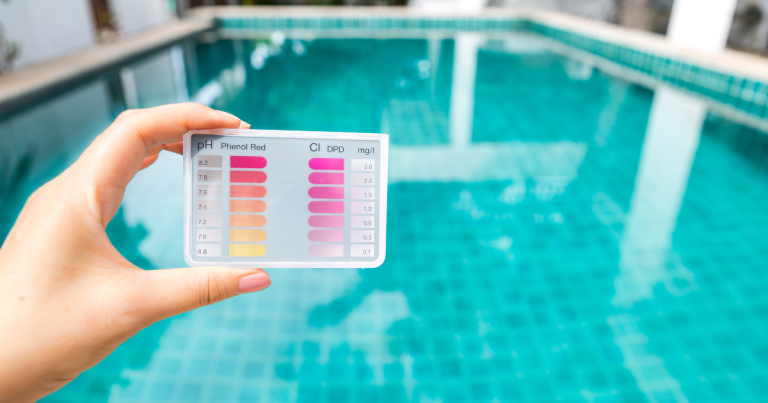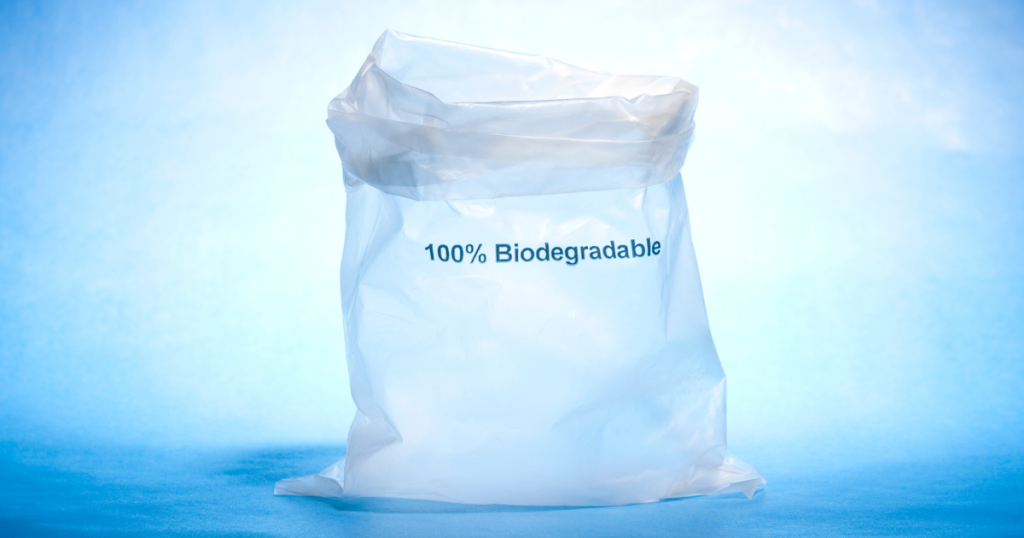The Proper Way to Clean a Cartridge Filter
A cartridge filter system is designed to capture debris, dirt, oils, and other particles suspended in your pool water. The filter itself consists of a cylindrical cartridge made from pleated polyester fabric. As water flows through the pleats, the fabric traps contaminants, allowing clean water to return to the pool.
Cartridge filters are popular because they are easy to maintain, more energy-efficient, and don’t require backwashing, which saves water. However, they need periodic cleaning to maintain optimal performance.
What is a Cartridge Filter System?
A cartridge filter system is designed to capture debris, dirt, oils, and other particles suspended in your pool water. The filter itself consists of a cylindrical cartridge made from pleated polyester fabric. As water flows through the pleats, the fabric traps contaminants, allowing clean water to return to the pool.
Cartridge filters are popular because they are easy to maintain, more energy-efficient, and don’t require backwashing, which saves water. However, they need periodic cleaning to maintain optimal performance.
Types of Cartridge Filters
Cartridge filters come in various sizes and configurations. Some of the most common types include:
- Single Cartridge Filters:These are simple systems where a single cartridge is used to filter water. They are typically found in smaller pools or spas and are easier to maintain.
- Multi-Cartridge Filters:Larger pools or those requiring more filtration capacity may use multi-cartridge systems. These systems feature two or more cartridges housed together, increasing the filtration area and improving efficiency. Cleaning them can take more time, as each cartridge must be cleaned individually.
- Pleated vs. Non-Pleated Filters:Pleated filters are the most common and offer more surface area for filtration. Non-pleated filters have a simpler design and can be less efficient but are easier to clean and maintain.
Depending on your pool size and usage, the type of cartridge filter you use may require slightly different cleaning techniques or frequencies. It’s important to consult your manufacturer’s guidelines to understand what’s best for your pool.
Understanding Pressure vs. Vacuum Systems

Before diving into the cleaning process, it’s important to understand the difference between pressure and vacuum pool systems.
- Pressure Systems:In pressure-driven systems, water is pushed through the cartridge filter by the pool pump. The pump creates pressure on one side of the filter, forcing water through the pleats and trapping debris in the fabric. These systems are common in residential pools.
- Vacuum Systems:In vacuum-driven systems, the water is drawn through the filter by a vacuum force, typically generated by a secondary pump. These systems are often used in larger pools, like commercial facilities or aquatic centers, where the water is pulled through the filter as opposed to being pushed.
The cleaning process is essentially the same for both types of systems, but it’s helpful to know which one you’re working with, as vacuum systems can sometimes require more frequent cleaning due to the higher volume of water they handle.
Understanding Filter Ratings and Micron Levels

Filter micron ratings play a crucial role in determining the quality of filtration and, ultimately, the clarity and cleanliness of your pool water. Micron levels measure the size of particles that a filter can effectively capture, with a smaller micron rating indicating a finer filtration. Here’s a breakdown of what this means and why it matters for your cartridge filter:
What is a Micron?
A micron, or micrometer, is one-millionth of a meter, often represented as “μm.” Pool contaminants such as dirt, pollen, algae, and bacteria vary in size, typically from around 1 to 100 microns. Filters with lower micron ratings can trap smaller particles, resulting in clearer water but potentially impacting water flow and pressure.
Typical Micron Ratings for Cartridge Filters
Cartridge filters usually have a micron rating between 10 and 20 microns, though some high-performance filters can capture particles as small as 5 microns. Here’s a general comparison:
- 20 Microns: Effective for trapping larger debris, fine dirt, and some algae, while allowing for good water flow.
- 10 Microns: Provides a balance between water clarity and flow, capturing finer particles like pollen and small algae spores.
- 5 Microns: Ideal for achieving crystal-clear water, capturing particles invisible to the naked eye, such as fine silt and some bacteria. However, this level may increase maintenance and cleaning frequency due to restricted flow.
How Micron Level Affects Water Quality
Choosing the right micron level impacts both the clarity and safety of your pool water:
- Clearer Water: Lower micron filters remove smaller particles, creating a sparkling, pristine look that pool owners seek. This can be especially important for commercial pools or pools with high bather loads.
- Reduced Contaminants: A finer micron rating helps remove harmful bacteria and other microorganisms, improving water safety and reducing the need for chemicals.
Choosing the Right Micron Rating
Selecting a micron rating depends on factors like pool size, frequency of use, and personal preferences for water clarity. High-use or public pools may benefit from lower micron filters to maintain higher standards of cleanliness, while a backyard pool may not require such intense filtration.
The Balance Between Filtration and Flow
It’s important to note that lower micron filters might restrict water flow, putting added pressure on your pool pump. This can lead to more frequent cleanings and even potentially shorten pump life if not carefully managed. Pool owners should choose a micron level that balances effective filtration with their pool system’s capacity, and regular cleaning is essential to maintaining flow efficiency.
Final Tips for Selecting Micron Levels
If in doubt, start with a filter in the 10-15 micron range, which provides a balance between fine filtration and manageable maintenance. You can always upgrade to a finer filter if you’re seeking ultra-clear water, but be prepared to adjust cleaning and maintenance accordingly.
This balance between micron rating and filter maintenance helps extend filter life, keeps water clear, and ensures a safe, enjoyable swimming experience for everyone.
Environmental Factors Affecting Cartridge Filters

Various environmental factors influence how often and how effectively your cartridge filter functions. Being aware of these elements can help you adjust your cleaning schedule and practices.
- Debris and Leaves:If your pool is situated near trees or vegetation, you’ll find that your cartridge filter collects debris more quickly. Pools surrounded by foliage often require more frequent filter cleaning.
- High Swimmer Load:If your pool sees a lot of use, particularly during summer or parties, the filter will need to handle higher volumes of oils, lotions, and contaminants from swimmers.
- Sunscreen and Lotions:Sunscreens, tanning oils, and lotions contribute to clogging your cartridge filter. The more swimmers apply these substances, the faster your filter gets dirty. Regular soaking of the cartridge can help break down these oils.
- Algae and Cloudiness:If algae bloom in your pool, your filter will work overtime to clean the water. After treating your pool with algaecides or shock treatments, it’s essential to clean the filter to remove any dead algae particles.
By understanding the specific environmental challenges your pool faces, you can better anticipate how often cleaning is required and what additional steps might be necessary to maintain optimal filter performance.
Signs That It’s Time to Clean Your Cartridge Filter

Knowing when to clean your cartridge filter is vital. Regular maintenance ensures that your filter operates at peak efficiency. Here are a few signs that it’s time to clean your filter:
- Increased Pressure:Most pools have a pressure gauge on the filter tank. When the pressure rises 8-10 psi above the normal operating range, it’s time to clean the filter. This indicates that the filter is clogged with debris, restricting water flow.
- Reduced Water Flow:If you notice that the pool’s water return is weaker than usual or that the vacuum isn’t working efficiently, the filter may be clogged.
- Cloudy Water:Poor water clarity can be another sign that the filter is struggling to keep up with the pool’s demands.
- Longer Cleaning Cycles:If you find that your automatic cleaner or skimmer basket is filling up faster than usual, it might be because the filter isn’t doing its job properly.
Step-by-Step Guide to Cleaning a Cartridge Filter
Step 1: Turn Off the Pool Pump
Before starting any maintenance on your pool’s filtration system, always turn off the pool pump. This ensures that water isn’t flowing through the system while you work and prevents any accidents.
Step 2: Relieve the Pressure
If you’re working with a pressure system, you need to relieve the pressure inside the filter tank. This can be done by opening the air relief valve, typically located on top of the filter housing. Allow the pressure to fully release before continuing.
Step 3: Remove the Filter Housing
Next, loosen the clamp or bolts securing the filter housing and carefully remove the top. This will expose the filter cartridge inside.
Step 4: Take Out the Cartridge
Gently lift the cartridge out of the housing. Be cautious not to damage the pleats, as these are crucial for filtration. Inspect the cartridge for any signs of wear, including frayed fabric or tears. If the cartridge is damaged, it will need to be replaced.
Step 5: Rinse the Cartridge
Using a garden hose with a spray nozzle, thoroughly rinse the cartridge from top to bottom. Focus on cleaning between the pleats where dirt, oils, and debris are trapped. Avoid using high-pressure washers as they can damage the delicate filter material.
Step 6: Soak the Cartridge (if necessary)
If your cartridge is heavily soiled or has been subjected to oils and lotions, consider soaking it in a cleaning solution. Use a mixture of water and a filter cleaner, allowing the cartridge to soak for at least 30 minutes. This can help break down stubborn contaminants.
Step 7: Rinse Again
After soaking, rinse the cartridge thoroughly to remove any remaining cleaning solution and dislodged debris.
Step 8: Inspect and Replace
After rinsing, inspect the cartridge once more for any signs of damage. If it shows significant wear or if rinsing does not improve water clarity, it may be time to replace it with a new cartridge.
Step 9: Reassemble the Filter
Once the cartridge is clean, carefully place it back into the housing. Secure the filter housing lid and ensure all clamps or bolts are tightened.
Step 10: Restart the Pool Pump
Close the air relief valve, turn the pool pump back on, and check for any leaks. Monitor the pressure gauge to ensure everything is functioning properly.
Advanced Troubleshooting Tips
Despite regular maintenance, issues can arise with your cartridge filter system. Here are a few common problems and how to troubleshoot them:
- Persistent High Pressure:If cleaning doesn’t reduce the pressure, it could mean the cartridge is beyond cleaning and needs replacement. Another potential issue could be a blocked return line or improper pump operation, which should be checked.
- Poor Water Quality Despite Cleaning:If your water remains cloudy or dirty after cleaning the filter, it might indicate that the filter cartridge is worn out, or the water chemistry is off. Test your pool water to ensure proper pH and sanitizer levels.
- Water Leaks Around Filter Housing:This is often caused by a worn or misaligned O-ring. Inspect the O-ring for cracks, lubricate it with silicone-based grease, and ensure it’s properly seated in the groove.
Common Troubleshooting Tips

Even with regular maintenance, cartridge filters can encounter various issues that may affect their performance. Here are some common problems and their potential solutions:
1. Air Bubbles in the System
Air bubbles can disrupt the filtration process and reduce the effectiveness of your cartridge filter. If you notice air bubbles in the water returning to the pool:
- Check for Leaks:Inspect all connections and seals for leaks that may allow air to enter the system. Tighten fittings as necessary.
- Bleed the System:Most cartridge filter systems have a bleed valve to release trapped air. Make sure to bleed the system until water flows steadily from the valve.
- Inspect the Pump:Ensure that the pump is priming correctly and that the water level in the pool is adequate to avoid drawing in air.
2. Frequent Clogging
Frequent clogging can be frustrating and may indicate issues with your filter or water chemistry. To address this:
- Regular Cleaning:Clean the cartridge regularly, ideally every 4-6 weeks, to remove debris and contaminants. Soaking the cartridge in a cleaning solution can help dislodge stubborn dirt.
- Check Water Chemistry:Ensure your pool water is balanced. High levels of contaminants can lead to rapid clogging. Use appropriate chemicals to maintain balanced pH, alkalinity, and sanitizer levels.
- Inspect the Filter Size:Ensure that the cartridge filter is adequately sized for your pool. An undersized filter will struggle to keep up with the demand, leading to frequent clogging.
3. Odor Problems
Unpleasant odors can be a sign of bacterial growth or contaminants within the filter. To remedy this:
- Deep Clean the Cartridge:If you detect odors, a deep clean of the cartridge is necessary. Use a filter cleaner specifically designed to break down oils and organic material.
- Check Water Quality:Odors can also stem from imbalanced water chemistry. Regularly test and treat your pool water to eliminate any sources of odor.
- Ensure Proper Filtration Cycle:Make sure the filter is running for the recommended duration each day to effectively circulate and cleanse the water.
Mistakes to Avoid

Even experienced pool owners can make mistakes during the maintenance of cartridge filters. Here are some common pitfalls to avoid:
- Neglecting Regular Cleanings:Delaying or skipping regular cleanings can lead to increased pressure and reduced water clarity. Make it a routine to check your filter every 4-6 weeks.
- Using High Pressure to Clean:While it might be tempting to use a pressure washer for quick cleaning, doing so can damage the cartridge material and decrease its lifespan. Always use a gentle spray from a garden hose.
- Soaking Too Long:While soaking the cartridge can help break down contaminants, leaving it submerged in cleaning solution for too long can damage the fabric. Follow the manufacturer’s recommendations for soaking times.
- Ignoring Wear and Tear:Some users continue to use cartridges that show signs of wear, thinking a quick clean will suffice. Regularly inspect your cartridges, and replace them when necessary to avoid compromising water quality.
- Forgetting to Check Water Chemistry:If your water chemistry is off, it can lead to quicker clogging of your filter. Regularly test your pool water and adjust chemical levels accordingly.
- Reassembling Incorrectly:Ensure that all parts are correctly reassembled and secured before restarting the pump. Loose fittings can cause leaks or improper water flow.
- Overlooking the O-Ring:The O-ring should be inspected and lubricated regularly. A worn or damaged O-ring can lead to leaks and pressure issues. Replace it as needed.
By being aware of these common mistakes, you can maintain your cartridge filter more effectively and prolong its life.
Best Practices for Maintaining Cartridge Filters

To keep your cartridge filter system in peak condition, consider the following tips:
- Regular Cleaning:Clean your cartridge filter at least once every 4-6 weeks, depending on usage. Pools with heavy usage may require more frequent cleanings.
- Monitor Water Quality:Regularly check and balance your pool’s water chemistry to ensure your filter doesn’t work harder than necessary.
- Replace Cartridges:Even with proper care, cartridges wear out over time. Replace the filter cartridge every 1-2 years, depending on how often the pool is used and the water conditions.
- Chemical Soaking:For filters exposed to oils, lotions, and other chemicals, soak the cartridge in a cleaning solution at least once a season.
- Inspect O-Rings:Regularly check the filter housing’s O-ring and replace it if worn to prevent leaks and maintain proper pressure.
- Invest in Quality Cartridges:Purchase high-quality cartridges from reputable manufacturers, as they tend to last longer and perform better.
- Use a Pre-Filter:Consider installing a pre-filter system to capture larger debris before it reaches the cartridge filter, helping to extend its life.
- Store Properly:If you need to store the cartridge for the off-season, ensure it’s clean and dry before putting it away. Store it in a cool, dry place to prevent mold and mildew growth.
By following these best practices, you can enhance the longevity and efficiency of your cartridge filter, ensuring clean and clear water for your pool.
Eco-Friendly Cleaning Practices

Maintaining your pool and its filtration system in an environmentally friendly way can minimize water waste and reduce the use of harmful chemicals. Consider these eco-friendly tips:
- Use biodegradable cleaning solutions: Many filter cleaning chemicals are harsh on the environment. Opt for biodegradable products that are just as effective without causing harm.
- Reduce water waste: Cartridge filters require less backwashing than sand or DE filters, but you can conserve even more water by turning off the hose while scrubbing the filter.
- Recycle or repurpose old cartridges: Some manufacturers or local pool stores may offer cartridge recycling programs. Alternatively, old cartridges can be repurposed for other uses, such as garden filters or creative DIY projects.
Health and Safety Considerations
Proper filter maintenance is essential not only for clear water but also for swimmer safety. A well-maintained cartridge filter can help prevent the spread of recreational water illnesses (RWIs), which include:
- Eye and skin infections:These can result from bacteria and contaminants in poorly filtered pool water.
- Ear infections (swimmer’s ear):Dirty or poorly circulated water is a common cause of ear infections.
- Respiratory issues:Harmful microorganisms can lead to respiratory problems if left unchecked in the water.
Maintaining a clean filter ensures that harmful bacteria, algae, and other microorganisms are effectively trapped and removed from the water, protecting swimmers’ health.
Emerging Cartridge Technology
As the demand for energy-efficient and sustainable pool maintenance solutions grows, the filtration industry is evolving. Here are some trends and innovations you might want to watch:
- Smart Filtration Systems:New technologies are emerging that integrate smart monitoring systems into cartridge filters. These systems can provide real-time data on water quality, filter pressure, and even automate cleaning schedules, making maintenance more convenient.
- Eco-Friendly Materials:Manufacturers are developing cartridges made from recycled and environmentally friendly materials. These innovations not only improve sustainability but also enhance filter performance.
- Advanced Cleaning Solutions:New cleaning agents are designed to work effectively at lower concentrations, reducing the environmental impact of traditional cleaning methods.
- Self-Cleaning Technology:Some manufacturers are exploring self-cleaning technology for cartridge filters, minimizing the need for manual maintenance and enhancing user convenience.